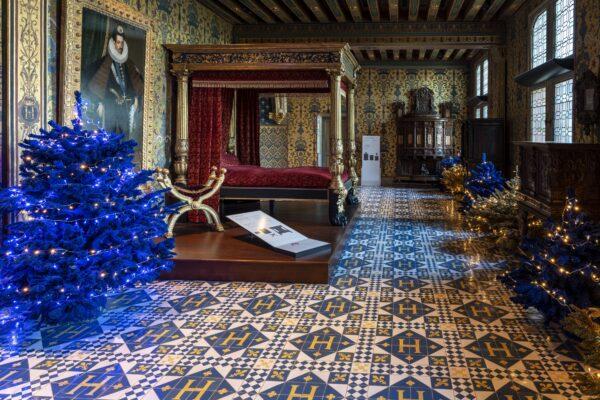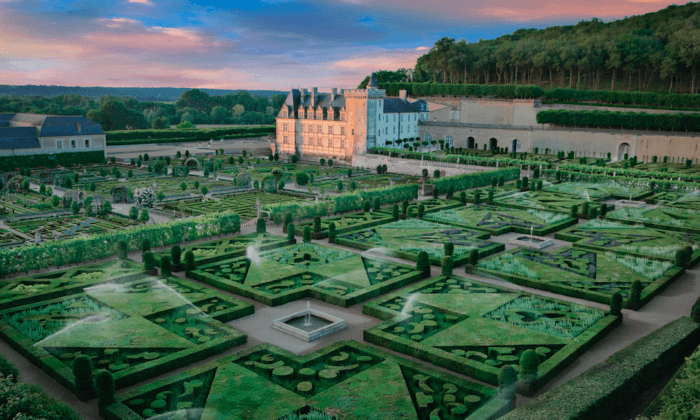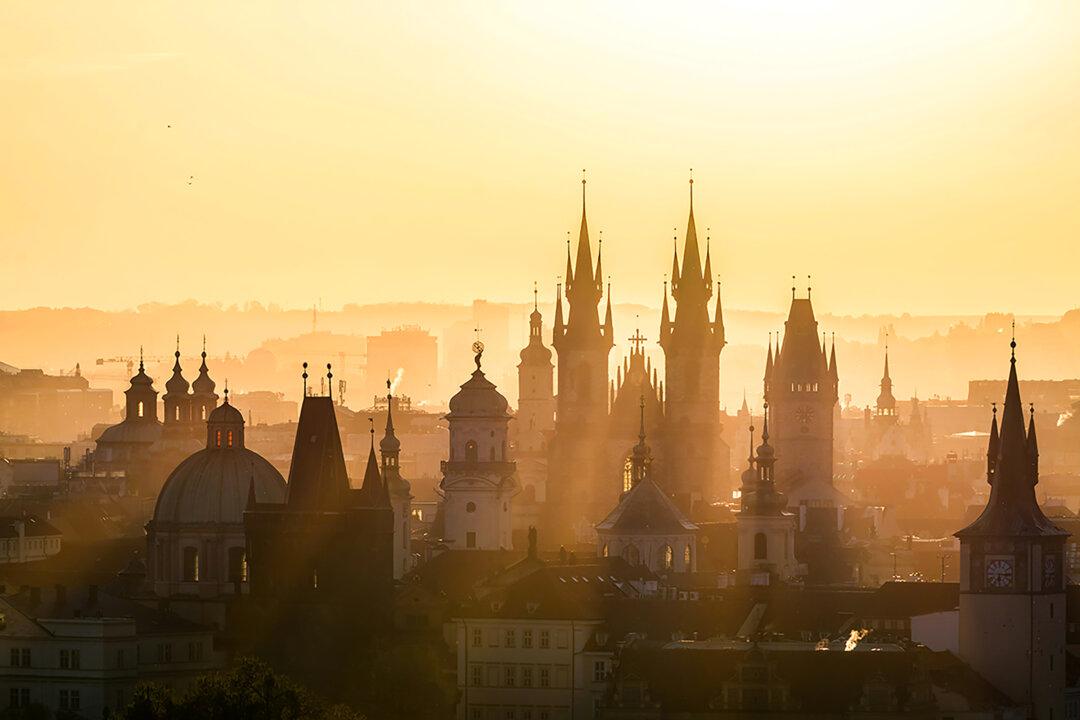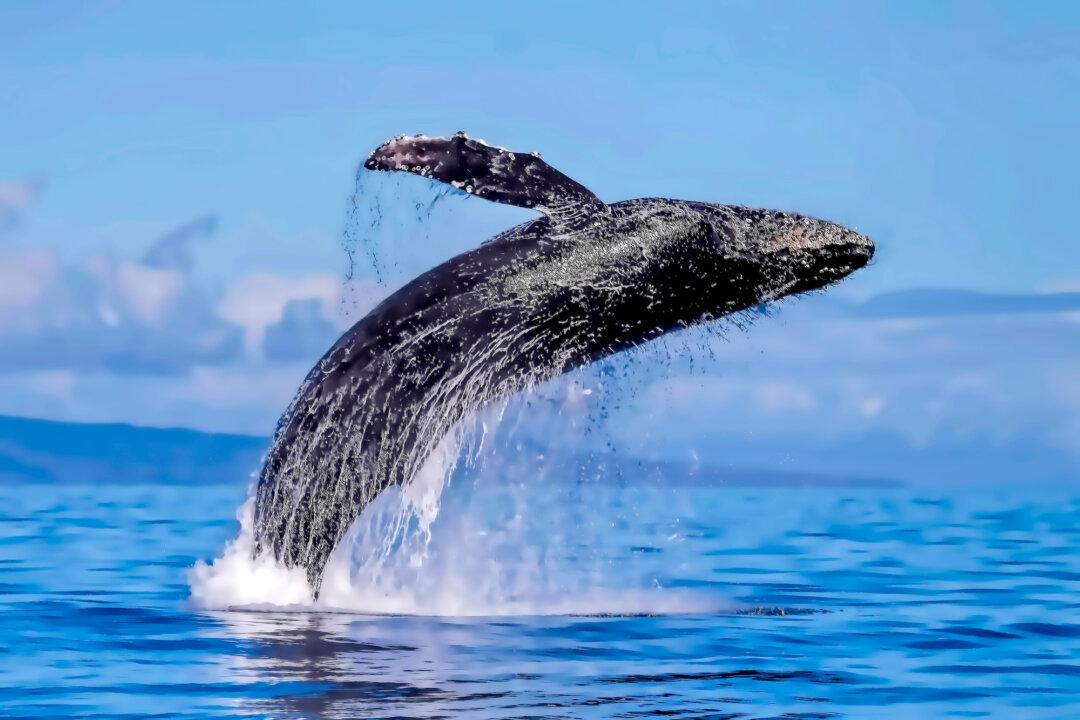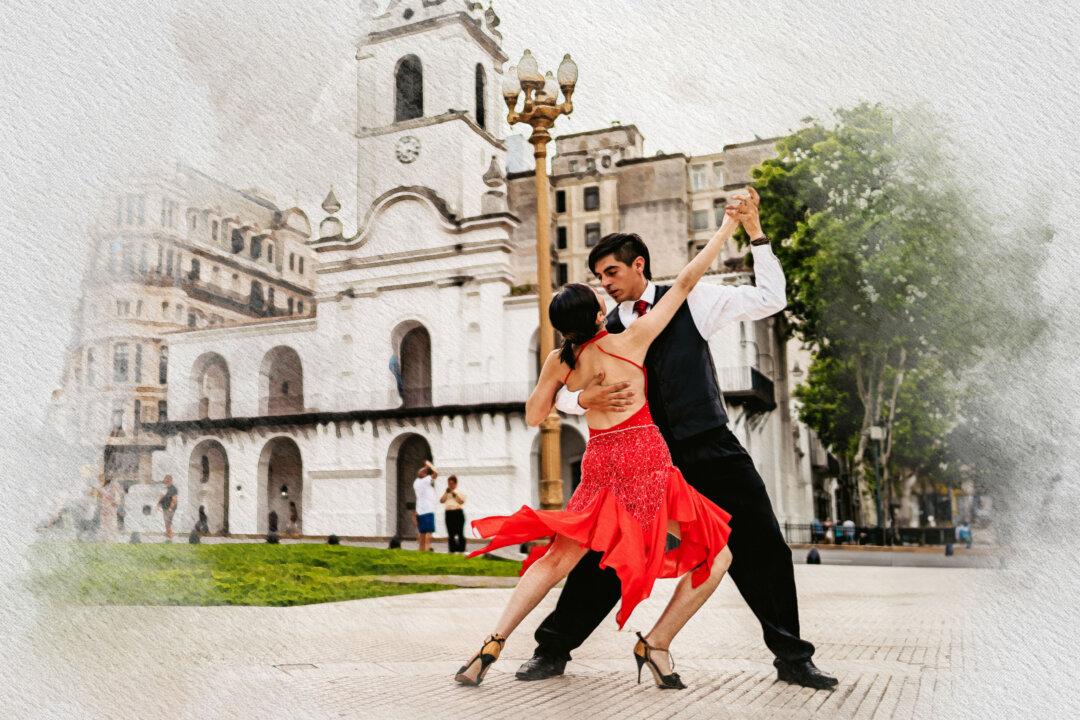The scale of these gardens was so sweeping that when I climbed the final step to the top of the belvedere, I drew a breath. The size, yes, but also the remarkable attention to detail. Hemmed in on all sides—by a storybook village, a 12th-century church, a forest, and its namesake château, the gardens at Villandry spread, lovely and ornate, reaching across 22 acres. Just below, gardens devoted to love, complete with broken hearts, mazes to signify the dance and whirlwind of passion, and even blades and swords to indicate its tragedy. Plus, labyrinths, ornamental gardens, kitchen gardens, and water gardens, built to reflect the heavens above.
After rambling around above, and then down on a network of paths that meandered among all the perfectly coiffed greenery, a church bell sounded out, reminding me it was almost time for lunch. Making my way back to the car park, I saw a man walking toward a work truck. I had read that maintaining the gardens at Villandry required the best efforts of 10 full-time gardeners, and as he was dressed casually, I assumed he was one of them. Pruning takes place all winter long—maybe he was just finishing up his morning and headed to his own hot lunch?
Turning, he introduced himself. “Hello, my name is Henri, and I’m the owner of this château,” he said, friendly and unassuming. “Welcome to my place.”
I was taking a little road trip through the Loire Valley, piloting my four-door Renault along winding roads, tracing this great river and hopping from château to château. Altogether, hundreds of castles dot this “garden of France,” at its closest point about an hour southwest of Paris. I saw just a small fraction, having picked up my rental car in Orleans and venturing through Tours and many surrounding towns.
Amboise
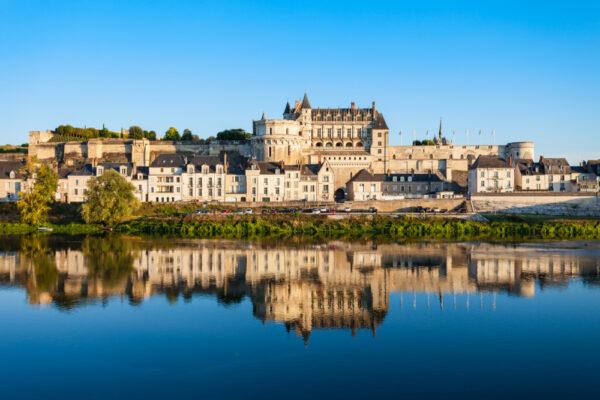
For example, set on a hill over a busy town, the grand Royal Château of Amboise was once home to a succession of nine French kings. During that period in the 15th and 16th centuries, kings would move from castle to castle, and an entourage of 10,000 would move with them.
“It was like an old circus,” said my guide, Catherine Reyes. “They would even bring the animals—everything was moving at the same time.” And while time, revolution, and abandonment destroyed much of this château, what’s been restored tells a compelling story.
On one floor, royal apartments date back to the 16th century.
“This staircase is a time machine,” said Reyes, as we climbed the winding stone stairs to an upper floor restored to celebrate Louise Philippe, the last king of France. His “July Monarchy” was initially popular, and he’s been described as a “citizen king.” His huge portrait hung in one room, showing a man with thick mutton chops. Reyes thought he looked a little like Elvis.
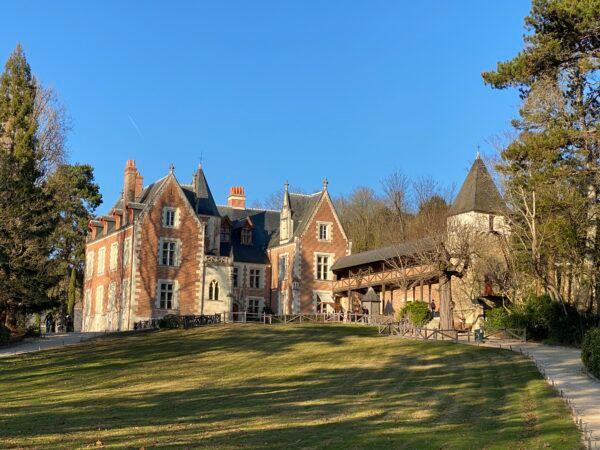
Leonardo da Vinci is buried at the chapel here. A short walk away, a pleasant stroll across town takes you to the much-smaller Château du Clos Lucé. Here, Da Vinci, invited by King Francis I, lived out his final years, from 1516 to 1519. Recreating his bedroom and workshop, the owners of the château have also turned the structures and grounds into a science museum, actually building a number of his ideas and inventions from his sketches and notes and bringing them to life, with a room full of video games demonstrating his flying machine.
Chenonceau
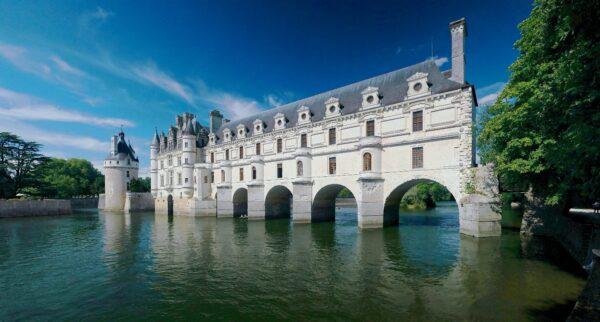
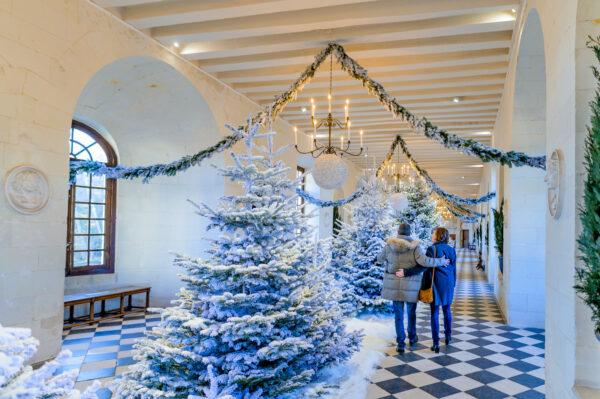
Villandry
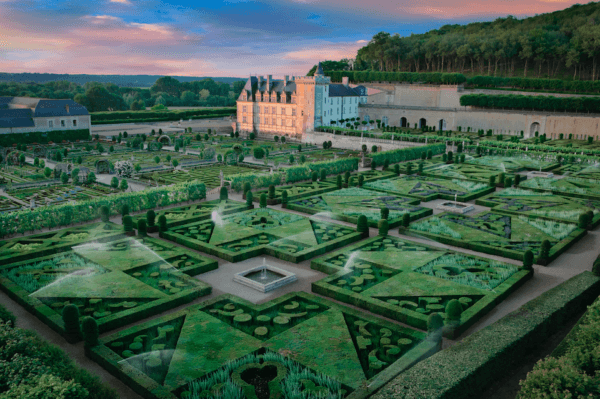
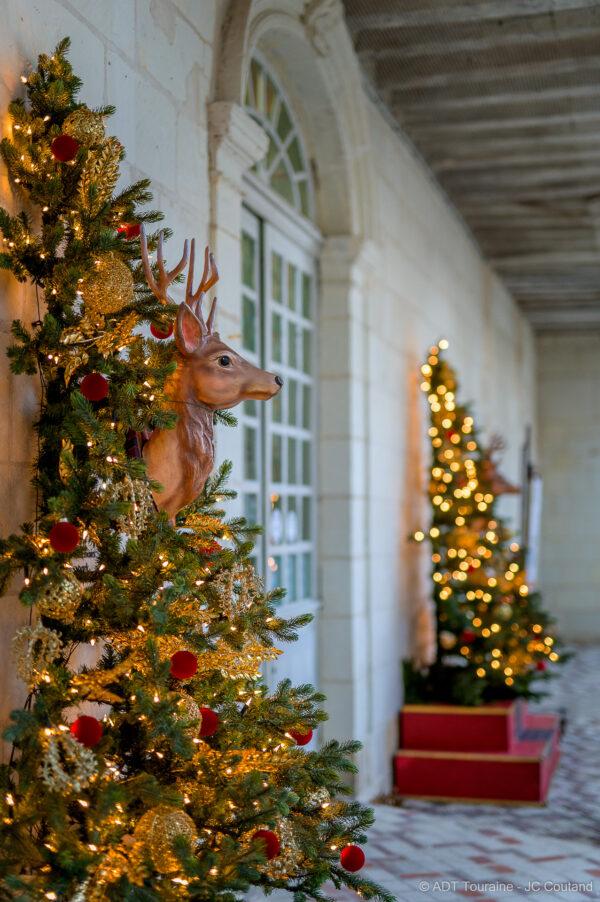
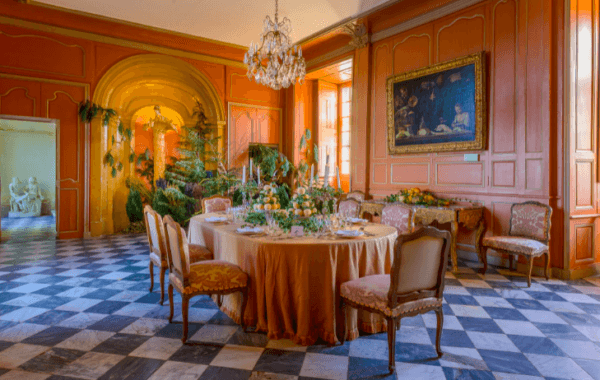
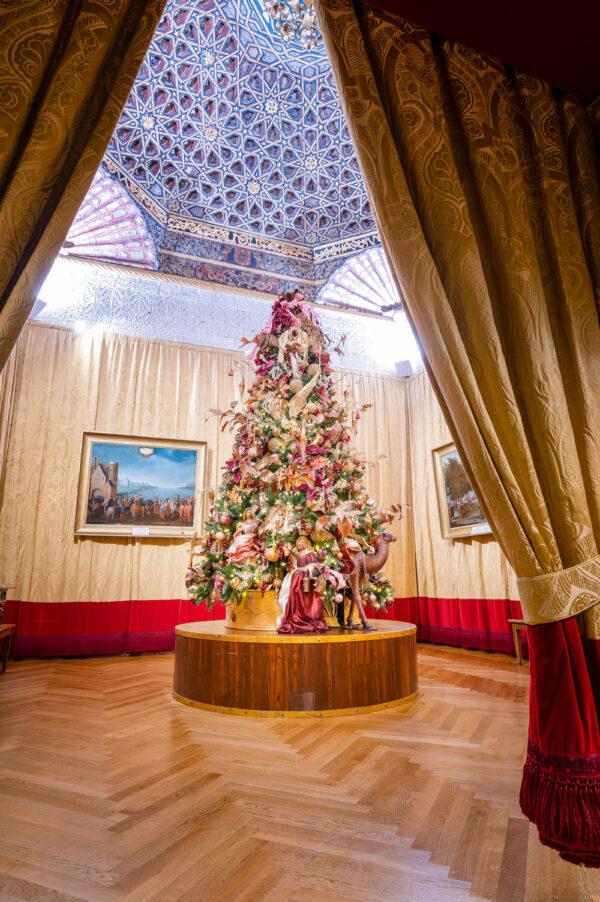
And of course, Villandry. Owner Henri Carvallo took me for a tour, showing me the inside of the château, cozy and comfortable, fires crackling in the fireplaces.
“We’ve tried to preserve the feeling of a family home,” he said, showing me family photos, and noting that he still lives just next door.
In one room, he pointed at a portrait. “Those are my great-grandparents,” he said, noting that the Spanish American couple bought the château in 1906.
The two poured hearts, souls, and treasure into transforming the tumbledown palace back to its Renaissance glory. He showed me their 17th-century collection of art, a 15th-century Moorish ceiling with 3,500 individual pieces, as well as the greenery all around, including within the rooms and halls. Carvallo says it’s all about bringing together both a natural and cultural heritage.
Visit for Christmas
An annual highlight for both visitors and locals, many of the châteaux across the Loire dress themselves up in sparkling lights and greenery and so much seasonal finery. Each one has a theme.For example, at Château d’Azay-le-Rideau, chef and artist Veronique Chauvet has filled the tables and ovens with delicious-looking papier mâché culinary creations (the wild boar roasting over a fire looks particularly tasty). At the former bishop’s palace in Meung-sur-Loire, a place once captured by Joan of Arc, playful displays reveal Santa’s secrets.
At Chenonceau, some of France’s top florists spend weeks planning and arranging the castle’s arrangements, this year bringing to life the theme, “a royal paradise.”
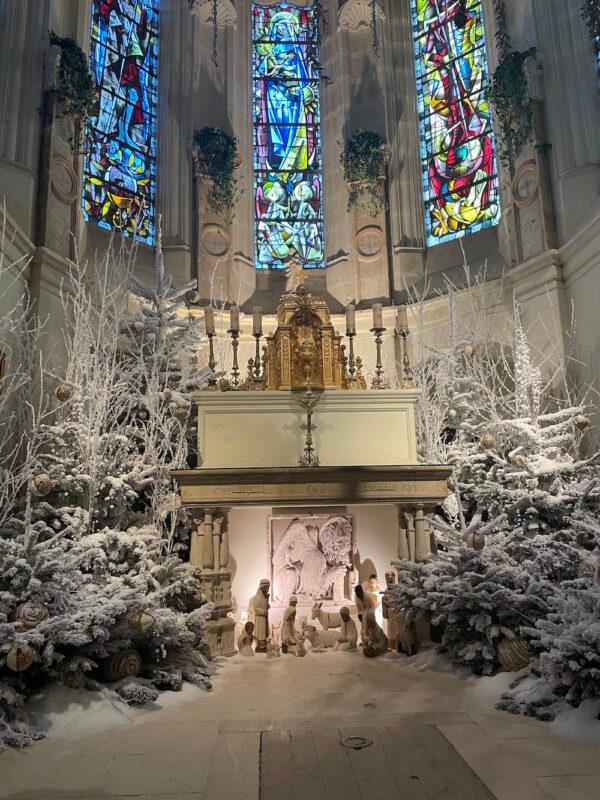
And at the royal castle in Blois, Christmas dreams are the focus, with more than 100 fir trees, decorated for the season, all through its grand chambers.
